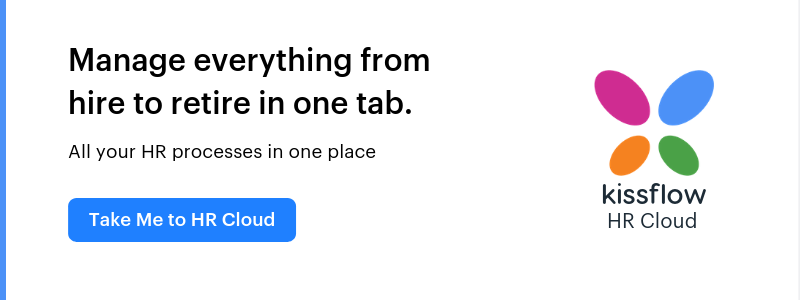When an employee leaves an organization because of resignation, redundancy, or other reason, several activities need to be completed within the HR function. Just missing one item can result in severe consequences as everything needs to be done just right.
This is when an employee offboarding checklist comes into play.
What is the offboarding process in HR?
Offboarding is the series of actions and procedures that result in the official parting of ways between an employee and an organization due to resignation, dismissal, or retirement. It covers all aspects involved in an employee's departure, such as the handover of their job responsibilities.
Purpose of an employee offboarding checklist
An employee offboarding checklist details all of the necessary tasks that must be done when an employee leaves the company. It is often completed as a check-box exercise so that line managers and HR team members can see at a glance which activities have been finished and which are still outstanding—just as they would during onboarding using an employee onboarding automation.
The key components of an employee offboarding checklist
The employee offboarding checklist has many different elements. Some of them are pretty standard. Others may be unique to your own company.
Let’s take a look at some of the most common employee offboarding pointers:

1. Communicate the employee’s departure
To avoid a fragmented spread of information and even potentially damaging office gossip, it’s a good idea to agree with the employee when, how, and by whom the details of their departure will be announced.
Depending on the situation, such as your business culture or the circumstances of their departure, you and the employee may choose a formal announcement in a company meeting, a more informal email, or even just a reference to it in a team huddle—especially if their role involved key responsibilities like employee expense management.
2. Facilitate the transfer of knowledge to the successor
If you are lucky enough to have recruited a replacement to the leaver’s vacant role before their actual leaving date, you’ll definitely benefit from scheduling in some time for those two individuals to get together to handover outstanding work and for the leaver to coach the successor on some of the most critical aspects of the role. This can be a great way to give the new hire a heads up on some factors relating to the job that might not be covered in a standard training course.
3. Recover company assets
When an individual leaves your company, you’ll need to ensure that they return any company property that may be in their possession before their leave date. This could include technology items such as laptops and mobile phones, or other property like uniforms or even keys to the premises. It can be helpful to draw up a list of these company assets so that you can be sure that all have been recovered in advance.
4. Update IT permissions and access
The IT team needs to undertake a process to disable IT access relating to the leaver, to make sure that nobody else can access their PC or other information after they leave. It is also quite common to add an “out of office” message or automatic redirection to the email account for a short period before closing it down, so that important emails from clients aren’t missed.
5. Conduct an exit interview
Exit interviews are an essential part of the employee offboarding process. An exit interview can take the form of either a face-to-face discussion between the leaver and a member of the HR team, or the completion of a questionnaire to understand the leaver’s views and opinions about the organization, ideas for improvements, and to gauge their true reasons for leaving. Smart companies understand the importance, not just of facilitating an exit interview process, but acting on the results.
6. Prepare for future reference requests
It’s likely that your former employee will give your name and contact details to act as a referee for next job offers that they receive. Make sure that you keep accurate and detailed records relating to their employment with you so that you can complete such requests quickly and correctly.
Automating offboarding checklists using Kissflow HR Cloud
The offboarding activities mentioned above, while not particularly complex, can be time-consuming and easy to miss if completed manually. This can lead to potential disappointment or bad feelings on behalf of your former employee, as well as additional time and resources spent by the business.
Rather than just a digital exit checklist, you can create your own automated employee offboarding workflow in Kissflow HR Cloud. Starting with our readymade offboarding template, you can detail all the unique tasks that need to be accomplished, assign them to individuals, and make sure that you never miss a step.
The employee offboarding checklist process is just one of many HR processes you can create inside Kissflow HR Cloud to build your own suite of automated processes.
Kissflow’s HR Cloud offboarding app is incredibly easy to use, as it takes your existing processes to create personalized workflows within its system so that the tasks and activities are completely aligned with your business needs.
The offboarding process can sometimes be neglected by organizations too busy with more value-adding activities relating to current employees. But, by using Kissflow’s HR Cloud clear-cut technology, you can automate many of the otherwise laborious, manual tasks to make the whole process smoother and easier for all parties.




